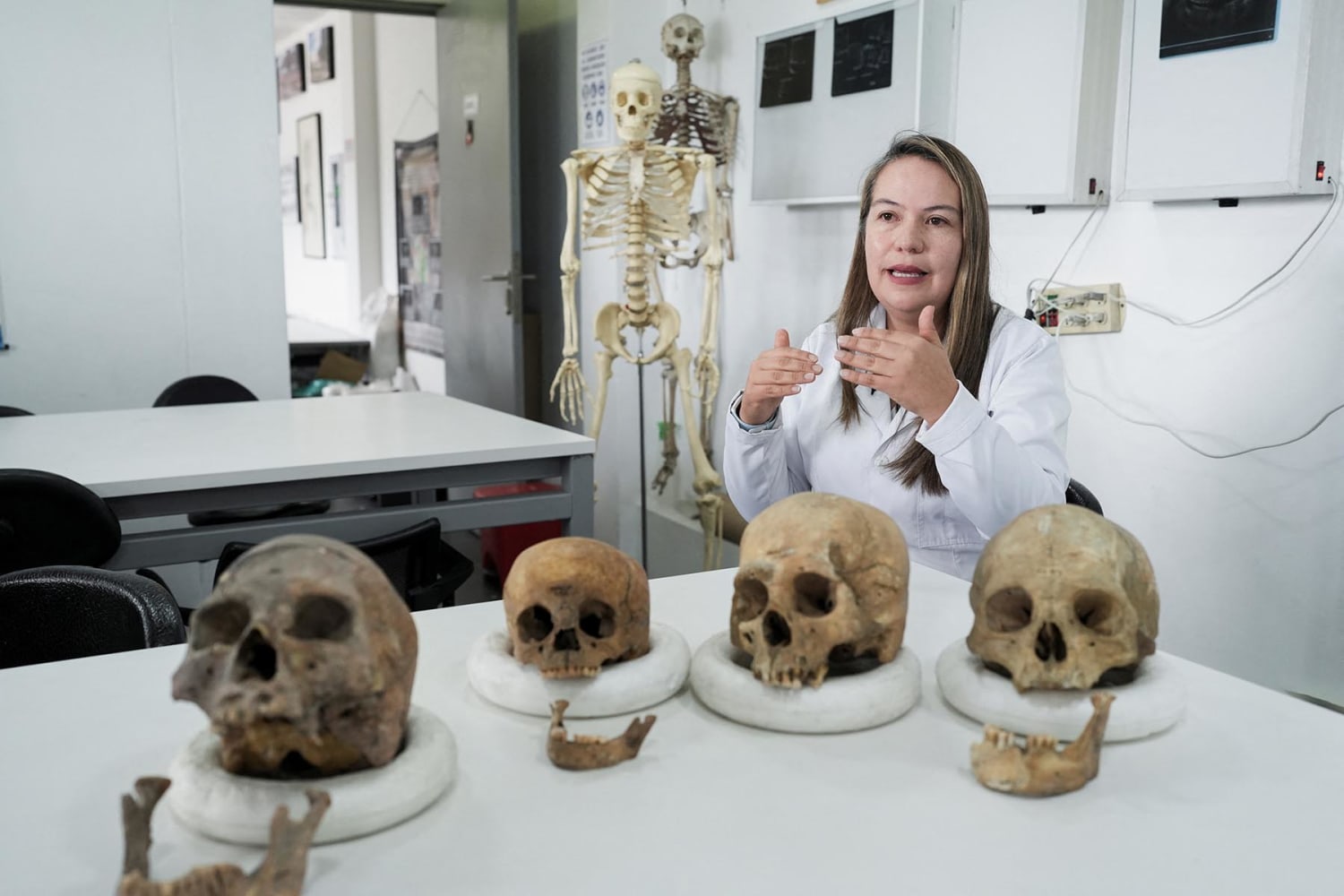A group of researchers in Colombia has uncovered a finding that might redefine our knowledge of human history in the Americas. Through DNA sequencing from ancient remains discovered in the area, the team has uncovered signs of a previously unidentified human lineage. This discovery introduces a new phase in exploring early inhabitants on the continent and sheds light on the intricacy of human migration and development.
El proyecto se centró en restos que se remontan a miles de años, cuidadosamente conservados en sitios arqueológicos que poseen información crucial sobre los primeros habitantes de América del Sur. El análisis genético de estas muestras reveló marcadores que no se ajustan a ninguno de los linajes actualmente conocidos por la ciencia. Esto sugiere que una rama completa de la ascendencia humana, hasta ahora oculta para los investigadores, tuvo un papel en la formación de la historia poblacional de la región.
For decades, anthropologists and geneticists have sought to trace the origins and movements of the first people who arrived in the Americas. It has long been accepted that early humans migrated across the Bering land bridge from Asia during the last Ice Age, spreading southward over time. However, findings like this challenge the simplicity of that narrative, showing that the genetic heritage of early populations was more diverse and interconnected than previously thought.
Los científicos colombianos, en colaboración con investigadores internacionales, emplearon tecnologías avanzadas de secuenciación de ADN para reconstruir la información genética a partir de muestras fragmentadas. El ADN antiguo, o aDNA, a menudo se encuentra muy degradado, lo que complica su análisis. Sin embargo, gracias a métodos mejorados de extracción y secuenciación, los investigadores ahora pueden recuperar datos valiosos incluso de restos sometidos a condiciones ambientales desafiantes como el calor y la humedad, ambas frecuentes en América Latina.
Based on the scientists’ findings, the newly discovered lineage does not fit well with the primary ancestral groups recognized in the Americas. Rather, it shows a unique genetic pattern, indicating that there might have been several waves of migration or interaction with previously unrecorded populations. This implies that the peopling of the Americas was not a simple, unidirectional event, but rather a multitude of intricate interactions among various groups over thousands of years.
Archaeological discoveries had previously pointed to this intricacy. Various cultural items, settlement configurations, and burial customs in different areas indicate that several communities with distinct traditions lived together and affected each other. The genetic evidence now offers biological backing for these insights, strengthening the notion that the early history of humans in the Americas was characterized by diversity, adaptation, and interaction.
One of the most remarkable aspects of this research is its potential to fill gaps in the historical record. Written accounts of pre-Columbian civilizations in South America are scarce, and much of what we know comes from archaeological excavations. DNA analysis provides a new tool to reconstruct the lives of people who left no written records but whose genetic heritage persists. In this sense, ancient DNA serves as a bridge between the past and present, connecting modern populations with their ancestors.
The analysis further emphasizes the significance of performing studies within Colombia and throughout Latin America, areas that have frequently been overlooked in global conversations about human ancestry. By allocating resources to regional research and applying state-of-the-art technology, Colombian researchers are offering noteworthy advancements to a discipline typically led by research in North America, Europe, and Asia. This success highlights the importance of developing scientific capabilities in varied regions to produce findings of worldwide significance.
The implications of the discovery extend beyond academic research. Understanding the deep genetic history of the Americas has cultural and social importance, particularly for Indigenous communities. Many groups today are interested in tracing their ancestral roots and preserving their heritage. While genetic research must be conducted with sensitivity and respect, it can provide new perspectives on identity and continuity across generations.
Simultaneously, the results prompt significant ethical deliberations. Collaborating with ancient remains requires meticulous cooperation with local populations and adherence to cultural customs related to the handling of ancestors’ remains. The Colombian group has highlighted the necessity of ethical research methods, making sure that scientific progress aligns with cultural awareness.
As the domain of ancient DNA studies expands, additional findings like these are anticipated. Every new piece of evidence contributes to the intricate mosaic of human history, revealing that our past is much more complex than once thought. Especially in South America, with its vast unexplored regions and numerous archaeological sites still to be examined, the opportunities for remarkable discoveries are extensive.
Scientists suspect that this novel lineage may provide insights into genetic differences seen in current populations that do not completely align with recognized ancestral backgrounds. By exploring these links, scientists aim to gain a deeper comprehension of how historic movements influenced present genetic diversity throughout the continent. Upcoming research might uncover interactions between this mysterious lineage and other groups, providing hints about cultural interactions, survival tactics, and adaptation to evolving environments.
The discovery also reflects the power of technological progress in science. A decade ago, sequencing highly degraded DNA in tropical conditions would have been nearly impossible. Today, advancements in genome analysis allow scientists to unlock secrets that remained inaccessible for centuries. As techniques continue to improve, more information will likely emerge from samples previously considered unsuitable for study.
At present, recognizing this unfamiliar human lineage marks a significant achievement for Colombian science and the global exploration of human origins. It enriches our comprehension of ancient history and questions the straightforwardness of migration paths into the Americas. In the end, the study reveals that human history is not linear but rather a intricate network of links, interactions, and adaptations that have formed the world as we know it.
The team behind this work has signaled plans to expand their research, analyzing additional remains from other regions of Colombia and beyond. Such studies may reveal whether this lineage was widespread across South America or localized to specific areas. They may also clarify how long this group persisted and whether it left lasting contributions to modern genetic diversity.
By continuing to explore these questions, scientists hope to move closer to a comprehensive picture of the first peoples of the Americas. Each fragment of DNA recovered from ancient remains adds a new piece to the puzzle, offering a glimpse into the lives of those who walked these lands long before written history began.
The Colombian discovery is not just about science. It is a reminder of the resilience of human memory, carried silently in our genes across generations. The revelation of an unknown lineage hidden in the DNA of ancient remains shows that the story of humanity is still unfolding, with many chapters yet to be written.




